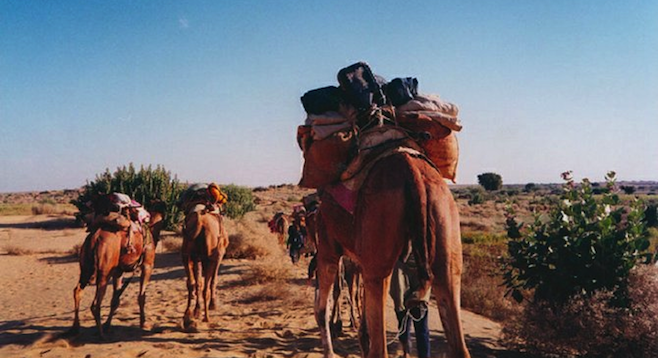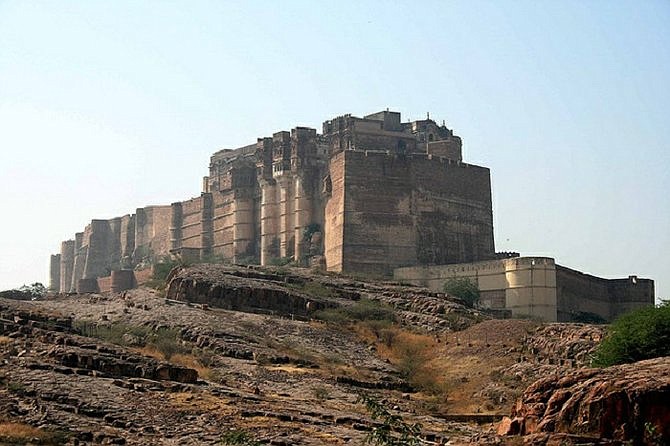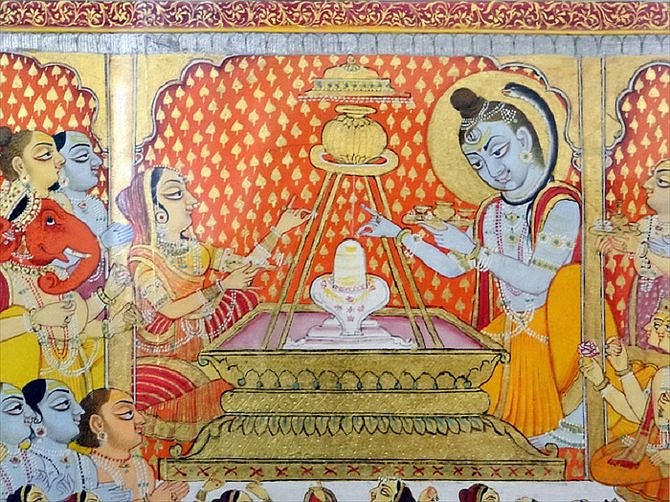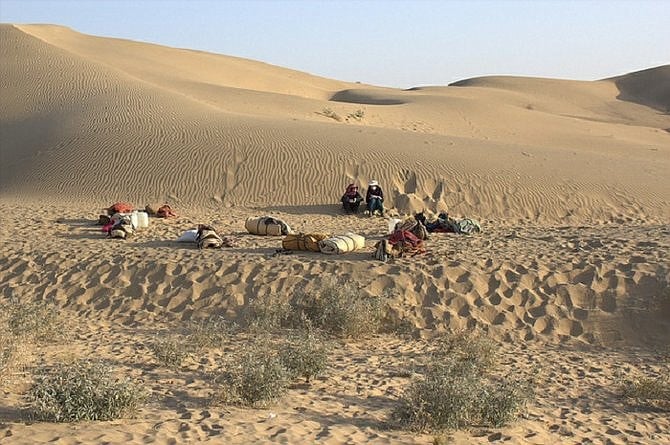 Facebook
Facebook
 X
X
 Instagram
Instagram
 TikTok
TikTok
 Youtube
Youtube


The largest state in India, Rajasthan, located in the northwest of the country, is known as “the land of the kings." Rajasthan is wrapped in vibrant colors, with impressive cities including the Pink City of Jaipur and the Blue City of Jodhpur (also called the "Sun City" due to its year-round sun).
Along with the variety in color, you’ll find the food spicy and mostly vegetarian; cows are sacred here and there is no beef on the menus. This region of India has a calmer environment than other areas.
The bleak surrounding Great Thar desert clashes dramatically with the Blue City; most buildings here are painted blue, and locals told me that the color keeps their homes cooler and repels mosquitoes. As we traveled through the desolate landscape of the desert, we knew we had reached Jodhpur when suddenly everything in front of us became blue.
I met a lovely Indian family through couchsurfing and it made my stay in Jodhpur truly memorable – rather than wandering around the city half-lost with a map and spending evenings secluded in my hotel room.

Must-visit places in Jodhpur include the Umaid Bhawan Palace, with its imposing art deco style and amazing hotel, and the Mehrangarh Fort in the center of Jodhpur, which sits atop a 400-foot hill with ornate carved exteriors and a great audio guide to learn all about the structure. The all-white Jaswant Thada is constructed of massive sheets of translucent white marble and is a beautiful site in the bright sun. And don’t miss the local market, Sardar Market Girdikot, to absorb yourself in local Indian life and experience the fascinating cuisine.

There's no shortage of accommodations in Jodhpur – from the extravagant Umaid Bhwan Palace, said to be one of the best hotels in the world, to the less-expensive Vivanta by Taj, to the modern, contemporary Hotel Raas with its view of the Mehrangarh Palace. Plus there's a wide range of hostels ranging from the Basant Inn near the Fort at $30/night to the peaceful blue-colored Cosy Guest House at $5/night.
The tour company Unseen India provides airport or rail pickup and private tours and arranges accommodations at very reasonable prices.

The culture and people of the Great Thar Desert are an attraction when visiting the Jodhpur area; you’ll witness folk dances, colorful costumes and the popular camel rides. If you really want to splurge, take a day trip in a vintage car previously owned by one of the local royal families or a Bishnoi Village Safari into the desert, where you’ll sleep under the desert sky in luxurious safari-style tents.
Another alternate is a rustic homestay in the desert village of Salawas, where you'll experience jeep safaris, camel treks, hiking and desert village life with one of the Bishnoi families. The Bishnois are considered some of the world’s first tree-huggers who have protected their environment for hundreds of years. One evening we participated in an opium ceremony with the village men; I was given an opium pipe, but I'm not sure there was an opium in it as I didn’t feel any effect after smoking. So it was somewhat of a disappointment.
The best time to visit the state of Rajasthan is September through March, when there are less tourists and prices are substantially lower. Check to see if there are any festivals when you plan to visit – they go on throughout the year. The Rajasthan International Folk Festival (RIFF) begins around the middle of October with over 200 musicians and artists from around the world.



The largest state in India, Rajasthan, located in the northwest of the country, is known as “the land of the kings." Rajasthan is wrapped in vibrant colors, with impressive cities including the Pink City of Jaipur and the Blue City of Jodhpur (also called the "Sun City" due to its year-round sun).
Along with the variety in color, you’ll find the food spicy and mostly vegetarian; cows are sacred here and there is no beef on the menus. This region of India has a calmer environment than other areas.
The bleak surrounding Great Thar desert clashes dramatically with the Blue City; most buildings here are painted blue, and locals told me that the color keeps their homes cooler and repels mosquitoes. As we traveled through the desolate landscape of the desert, we knew we had reached Jodhpur when suddenly everything in front of us became blue.
I met a lovely Indian family through couchsurfing and it made my stay in Jodhpur truly memorable – rather than wandering around the city half-lost with a map and spending evenings secluded in my hotel room.

Must-visit places in Jodhpur include the Umaid Bhawan Palace, with its imposing art deco style and amazing hotel, and the Mehrangarh Fort in the center of Jodhpur, which sits atop a 400-foot hill with ornate carved exteriors and a great audio guide to learn all about the structure. The all-white Jaswant Thada is constructed of massive sheets of translucent white marble and is a beautiful site in the bright sun. And don’t miss the local market, Sardar Market Girdikot, to absorb yourself in local Indian life and experience the fascinating cuisine.

There's no shortage of accommodations in Jodhpur – from the extravagant Umaid Bhwan Palace, said to be one of the best hotels in the world, to the less-expensive Vivanta by Taj, to the modern, contemporary Hotel Raas with its view of the Mehrangarh Palace. Plus there's a wide range of hostels ranging from the Basant Inn near the Fort at $30/night to the peaceful blue-colored Cosy Guest House at $5/night.
The tour company Unseen India provides airport or rail pickup and private tours and arranges accommodations at very reasonable prices.

The culture and people of the Great Thar Desert are an attraction when visiting the Jodhpur area; you’ll witness folk dances, colorful costumes and the popular camel rides. If you really want to splurge, take a day trip in a vintage car previously owned by one of the local royal families or a Bishnoi Village Safari into the desert, where you’ll sleep under the desert sky in luxurious safari-style tents.
Another alternate is a rustic homestay in the desert village of Salawas, where you'll experience jeep safaris, camel treks, hiking and desert village life with one of the Bishnoi families. The Bishnois are considered some of the world’s first tree-huggers who have protected their environment for hundreds of years. One evening we participated in an opium ceremony with the village men; I was given an opium pipe, but I'm not sure there was an opium in it as I didn’t feel any effect after smoking. So it was somewhat of a disappointment.
The best time to visit the state of Rajasthan is September through March, when there are less tourists and prices are substantially lower. Check to see if there are any festivals when you plan to visit – they go on throughout the year. The Rajasthan International Folk Festival (RIFF) begins around the middle of October with over 200 musicians and artists from around the world.
Comments